CONTENTS
Preface
Acknowledgement
List of Sitting Judges/Members of NCLAT & NCLT
Schedule of fees under The Insolvency and Bankruptcy Code
Important Developments from 2019 Onwards: At a Glance
Forms Under The Insolvency and Bankruptcy Code
PART – 1
CONCISE REFERENCER
Powers of NCLT: At a Glance
Notified Sections under IBC as on 1st July, 2021
CASE DIGEST: LIST OF IMPORTANT PRONOUNCEMENTS UNDER COMPANIES ACT
1. Transfer and Transmission of Securities
2. Reduction of Share Capital
3. Deposits: Delays and Defaults
4. Tribunal Convened General Meetings
5. Reopening of Accounts
6. Revision of Financial Statements
7. Tribunal Directed Investigation
8. Compromise and Arrangement and Amalgamation
9. De-Registration, Striking off of Companies and Director Disqualification
10. Winding Up & Dissolution
11. Revival and Rehabiliation of Sick Companies
12. Compounding of Offence
13. Sections 407-434: NCLT & NCLAT
14. Meeting of Board and its Power
15. Jurisdiction and Limitation
16. Removal of Names of Companies from Register of Companies
17. Miscellaneous
Case Digest: List of important Judgments under IBC
1. Section 7: Initiation of Corporate Insolvency
Resolution Process by Financial Creditor
Contents
2. Section 9: Application for Initiation of Corporate Insolvency Resolution Process by Operational Creditor
3. Section 10: Initiation of Corporate Insolvency Resolution Process By Corporate Applicant
4. Section 10A: Suspension of Initiation of Corporate Insolvency Resolution Process
5. Section 12: Time Limit for Completion of Insolvency Resolution Process
6. Section 12A: Withdrawal of Application Admitted Under Section 7, 9 or 10
7. Sections 14 & 96: Moratorium & other Related Sections
8. Interim Resolution Professional and Resolution Professional
9. Committee of Creditors
10. Section 29A: Person not Eligible to be Resolution Applicant
11. Sections 30 & 31: Approval and Submission of Resolution Plan
12. Section 32A: Liability for Prior Offences
13. Liquidation: Sections 33-54 & IBBI (Liquidation Process) Regulations, 2016 R453
14. Section 53: Distribution of Assets
15. Section 54
16. Section 65: Fraudulent or Malicious Initiation of Proceedings
17. Section 95: Application by Creditor to Initiate Insolvency Resolution Process
18. Guarantors
19. Limitation and Jurisdiction
20. Claims/Income Tax Related Aspects
21. Cases Related to Arbitration and IBC
22. Miscellaneous
Abbreviations
PART-2
Chapter 1—Introduction
1.1 Introduction
1.2 Meaning of NCLT and NCLAT
1.2.1 New enforcement mechanism—Place of tribunals
1.2.2 Difference between NCLT and NCLAT
1.2.3 Court v Tribunal
Contents
1.3 Introduction of concept of NCLT in India – Eradi Committee
1.4 2002 Amendment challenged
1.5 JJ Irani Committee
1.6 Introduction of Tribunal in Companies Act, 2013
1.6.1 Nature of challenge under 2013 Act
1.6.2 Reasons for establishing Tribunals
1.7 Further reading
Chapter 2—Constitution of NCLT and NCLAT
2.1 Introduction
2.2 Constitution of NCLT
2.2.1 Qualification
2.2.1.1 President
2.2.1.2 Judicial member
2.2.1.3 Technical member
2.2.2 Number of members
2.2.3 Seat of NCLT
2.2.4 Transfer of members
2.3 Appellate Tribunal (NCLAT)
2.3.1 Constitution
2.3.2 Number of members
2.3.3 Seat of NCLAT and Benches of NCLAT
2.3.4 Qualification
2.3.4.1 Chairperson
2.3.4.2 Judicial member
2.3.4.3 Technical member
2.4 Selection process
2.4.1 Manner of selection
2.4.2 Composition of Selection Committee
2.5 Term of NCLT and NCLAT
2.6 Staff
2.7 Further reading
Chapter 3—Transition to NCLT: Impact on existing cases
3.1 Introduction
3.1.1 Transitional provisions: at a glance
3.1.2 Important developments – 2019-20
3.2 Transfer of Pending Proceedings
3.2.1 Date for transfer of proceedings
3.2.2 Continuance of proceedings before existing forums
3.3 Pending High Court Proceedings
xii Contents
3.3.1 Corporate restructuring cases
3.3.1.1 Compromise and arrangements
3.3.1.2 Reduction of capital cases
3.3.2 Pending winding up proceedings
3.3.2.1 What will be the status of pending cases?
3.3.2.2 Appeals against orders passed by the High Court
3.4 Pending Company Law Board proceedings
3.4.1 Challenge against orders of CLB
3.4.2 Status of existing interim orders
3.5 Pending BIFR/AAIFR proceedings
3.6 Pending investigation proceedings
3.7 Existing interim orders
3.8 Further reading
Chapter 4—General Powers of NCLT and NCLAT
4.1 Introduction
4.2 General powers under the Act
4.2.1 Power to determine procedure (Section 424)
4.2.2 Power to punish for contempt (Section 425)
4.2.3 Powers of civil court (Section 424)
4.2.4 Powers of courts (Section 424)
4.2.5 Execution of orders (Section 424)
4.2.6 Assistance of courts/authorities (Section 429)
4.2.7 Delegation of powers (Section 426)
4.3 General powers under the Rules
4.3.1 Adjournment of hearing
4.3.2 General power to amend (Rule 155 of the NCLT Rules)
4.3.3 Tribunal to be deemed to be a court
4.3.4 Power to dispense with the requirements of the rules
4.3.5 Saving of inherent powers of the Tribunal (Rule 11 of the NCLT Rules) 59
4.3.6 Enlargement of time (Rules 15 and 153 of the NCLT Rules)
4.3.7 Rectification of order (Rule 154 of the NCLT Rules)
4.3.8 Power to impose costs (Rule 149 of the NCLT Rules)
4.3.9 Amicus curiae
4.3.10 Assessors or valuers (Rule 54 of the NCLT Rules)
4.4 General provisions for exercise of powers
4.4.1 Production of documents
4.4.2 Nature of exercise of powers
4.5 Comparison between powers of different tribunals
Contents xiii
Chapter 5—De-registration, Striking off of Companies and Director Disqualification
5.1 Introduction
5.2 Nature of the remedy of De-registration
5.2.1 Background for insertion of this remedy
5.2.2 Benefits
5.2.3 Scope of the remedy
5.2.4 Difference between provision of striking off and de-registration
5.2.5 Difference between winding up and deregistration?
5.3 Remedy of Deregistration
5.3.1 Who can apply?
5.3.2 When can one apply?
5.3.3 Under what circumstances?
5.3.4 Against which companies?
5.3.4.1 Can registration of any company under the Companies Act, 2013 be challenged?
5.3.4.2 Can registration of companies under the Companies Act, 1956 be questioned?
5.3.5 Nature of reliefs sought
5.4 Procedure for Deregistration
5.5 Striking off of Companies
5.5.1 Power of Tribunal to restore companies struck off
5.5.1.1 Power to restore in case of any type of striking off
5.5.1.2 Power in voluntary striking off
5.5.2 High Court cases and NCLAT cases
5.6 Procedure for Filing Appeal under section 252
5.7 Director Disqualification
5.7.1 Important case laws on disqualification of directors
5.7.1.1 DELHI High Court
5.7.1.2 KARNATAKA High Court
5.7.1.3 KERALA HIGH COURT
5.7.1.4 TELANGANA HIGH COURT
5.7.1.5 ALLAHABAD HIGH COURT
5.7.1.6 MADRAS High Court
5.7.1.7 GUJARAT High Court
5.7.1.8 BOMBAY High Court
5.7.1.9 Supreme Court
xiv Contents
Chapter 6—Variation of Shareholders’ Rights
6.1 Introduction
6.2 Overview of Changes
6.2.1 Companies (Amendment) Act, 2020
6.2.2 Additional approvals
6.2.3 Wider scope of applicants
6.3 What are shareholders’ rights?
6.3.1 Statutory rights
6.3.1.1 Can statutory rights be waived/varied?
6.3.2 Contractual rights
6.4 What constitutes class rights?
6.5 Nature and Scope of Variation
6.5.1 What constitutes variation?
6.5.2 Applicability of these decisions to section 48
6.5.3 Prohibition in contract – is variation possible?
6.6 When does section 48 become applicable? 113
6.7 Conditions for Varying Shareholder’s Rights 114
6.7.1 Approval for seeking permission to vary 114
6.7.1.1 Approval from the concerned class whose
rights are varied 114
6.7.2 Approval of other affected class of shareholders 115
6.7.2.1 Deciphering the term “Affect” 116
6.7.2.2 Manner of approval from affected classes 117
6.8 Variation by Other Provisions of the Act 117
6.8.1 Variation v Merger 117
6.8.2 Variation v Reduction 119
6.9 Objection to Variation 119
6.9.1 In which circumstances can one apply under
section 48(2)? 119
6.9.2 Who can apply? 120
6.9.2.1 When to object? 120
6.9.2.2 Joint application 121
6.9.3 What is the time limit? 121
6.9.4 Condonation of delay 122
6.9.5 Powers of Tribunal and nature of reliefs 123
6.9.6 Time limit for completion of proceedings 123
6.10 Procedure for Objecting to the Variation of Shareholders’ Right 123
6.11 Comparison Chart – Variation of Shareholder’s Right 127
6.11.1 Comparison of New Act with Old Act 127
Contents xv
6.11.2 Comparison of Old Act with New Act 127
6.11.3 Comparison of New Rules with Old Rules 128
6.11.4 Comparison of Old Rules with New Rules 128
6.11.5 Corresponding Forms under New Act & Old Act 128
6.12 Schedule I 129
6.12.1 Appendix A: Corporate Transactions Requiring
Special Resolution 129
6.12.2 Appendix B: Corporate Transactions Requiring
Ordinary Resolution 131
6.12.3 Appendix C: 10% Shareholding 133
6.12.4 Appendix D: Rights of Every Member 134
6.13 Further reading 135
Chapter 7—Transfer and Transmission of Securities
7.1 Introduction 136
7.2 Overview of changes 136
7.2.1 Scope and applicability of sections 58 and 59 have changed 136
7.2.2 Changes in timelines 136
7.2.3 Contract or arrangement 136
7.2.4 Companies (Amendment) Act, 2020 136
7.2.5 Significant change in scope of power of Tribunal 137
7.3 Appeal against Refusal to Transfer/Transmit 137
7.3.1 Distinction between remedy under sections 58 and 59 138
7.3.2 Securities of a private company (Section 58(1)) 139
7.3.2.1 Restrictions on transfer/transmission of shares 139
7.3.2.2 Restrictions on other securities 139
7.3.2.3 Interest of member: a grey area 140
7.3.2.4 Who can challenge? 140
7.3.2.5 Time limits 141
7.3.3 Securities of a public company 142
7.3.3.1 Reasons for refusal 143
7.3.3.2 Timelines 144
7.3.4 Reliefs 144
7.3.5 Interim reliefs 144
7.3.5.1 Can interim reliefs other than those specified in
rules be granted? 145
7.3.6 Penalty 145
7.4 Rectification of register of members 145
7.4.1 Rectification of register of members under section 59(1) 147
7.4.1.1 Which registers can be rectified? 147
xvi Contents
7.4.1.2 Under what circumstances? 147
7.4.1.3 Who can file an appeal for rectification? 147
7.4.1.4 To whom does the appeal lie? 148
7.4.1.5 Nature of reliefs 148
7.4.1.6 Interim reliefs 148
7.4.2 Rectification where transfers are in violation of law under section 59(4) 148
7.4.2.1 Which register? 148
7.4.2.2 Under what circumstances? 149
7.4.2.3 Who can make an application? 149
7.4.2.4 Relief 150
7.4.3 Difference between rectification sought under section 59(1) and section 59(4) 150
7.4.4 Time limit for filing application for rectification 150
7.4.5 Penalty 150
7.5 Case Laws and their Applicability 150
7.5.1 Part I: Case laws related to nature and scope of sections 111 and 111A 150
7.5.1.1 Case 1 150
7.5.1.2 Case 2 151
7.5.1.3 Case 3: Jurisdiction is exclusive 152
7.5.1.4 Case 4: Composite Petition 153
7.5.1.5 Case 5: Complicated Question 153
7.5.1.6 Case 6 154
7.5.1.7 Case 7 154
7.5.2 Part II: Case laws related to refusal to transfer and transmission of securities 155
7.5.2.1 Where refusal to transfer and transmission is valid 155
7.5.2.2 Where refusal to transfer and transmission is invalid 156
7.6 Procedure for Refusal to Transfer or Transmit Securities 160
7.6.1 Company Law Board (CLB) 160
7.6.2 National company law tribunal (NCLT) 161
7.7 Free Transferability of Share of Public Company 162
7.8 Comparison chart — refusal to transfer or transmit securities 175
7.8.1 Comparison of New Act with Old Act 175
7.8.2 Comparison of Old Act with New Act 177
7.9 Further reading 180
Contents xvii
Chapter 8—Reduction of Capital
8.1 Introduction 181
8.2 Overview of changes 181
8.2.1 Single procedure 181
8.2.2 Representation of authorities 181
8.2.3 Certificate not a conclusive proof 181
8.2.4 Restrictions on reduction 182
8.2.5 Removal of the words “and reduced” 182
8.2.6 Articles irrelevant 182
8.2.7 Companies (Amendment) Act, 2020 182
8.3 Meaning and scope of Reduction of Capital 182
8.3.1 Meaning of reduction 184
8.3.2 Applicability/non applicability of section 66 185
8.3.2.1 Only share capital 185
8.3.2.2 No application in mergers 185
8.3.2.3 Redemption 185
8.3.2.4 Court directed purchase in oppression and mismanagement 185
8.3.2.5 Securities premium account 185
8.3.2.6 Cancellation of unissued shares 185
8.3.3 Companies who can reduce capital 186
8.3.4 Manner of reduction 186
8.3.4.1 Whether we will be able to reduce the share capital in the same manner, as we were able to reduce it earlier? 186
8.3.4.2 Are there any new ways of reducing capital contemplated in the Act? 186
8.3.4.3 Can we take benefit of the decisions under the old Act? 186
8.3.4.4 Types of reduction 187
8.4 Restrictions/Conditions for reduction 190
8.4.1 Default in payment of deposits 191
8.4.2 Notice to authorities (Section 66(2)) 191
8.4.3 Auditor’s certificate 191
8.5 Approvals for Reduction 192
8.5.1 Approval from shareholder 192
8.5.2 Approval from Tribunal 192
8.6 Liability of Members 193
8.6.1 Unpaid creditors-liability of members 193
8.7 Fraud on creditors 193
xviii Contents
8.8 Procedure for Reduction of Share Capital 193
8.9 Additional important details 197
8.9.1 Role of Tribunal 197
8.9.2 What does the list of creditor contain? 197
8.9.3 Contents of petition 198
8.9.4 Contents of minutes 198
8.10 Comparison Chart on Reduction of Share Capital 199
8.10.1 Comparison of New Act (Companies Act, 2013) with
Old Act (Companies Act, 1956) 199
8.10.2 Comparison of Old Act with New Act 200
8.10.3 Comparison of New Rules with Old Rules 202
8.10.4 Comparison of Old Rules with New Rules 202
8.10.5 Corresponding forms as per New Act 202
8.11 Further reading 203
Chapter 9—Deposits: Delays and Defaults
9.1 Introduction 204
9.2 Overview of changes 204
9.2.1 The Banning of Unregulated Deposit Schemes Act, 2019 204
9.2.2 Bar on acceptance of deposits 205
9.2.3 Provisions discontinued 205
9.2.4 Acceptance from members 205
9.2.5 Default in payment 205
9.2.6 Fraud 205
9.2.7 Class action 205
9.3 Overview of law on deposits 205
9.4 Definition of deposits 209
9.4.1 Definition under section 2(31) 209
9.4.2 Items excluded from deposits 209
9.4.3 Definition of deposits for purpose of section 74 213
9.5 Applicability 216
9.5.1 Non applicability 216
9.6 Permissibility to Accept/Invite/Retain Deposits 216
9.6.1 Who can accept/invite deposits and from whom? 216
9.6.2 Retaining deposits under the Companies Act, 1956 217
9.6.2.1 Deposits which are not matured 217
9.6.2.2 Deposits remaining unpaid at the time of commencement 218
9.7 Remedies for Depositors 219
9.8 Restrictions on Defaulting Companies 221
Contents xix
9.9 Application to Tribunal 222
9.9.1 Application in case of non-repayment of new deposits 222
9.9.1.1 Who can apply? 222
9.9.1.2 Depositor of which company? 222
9.9.1.3 Under what circumstances? 223
9.9.1.4 What reliefs? 223
9.9.1.5 Applicability 223
9.9.2 Application for extension of time for company 223
9.9.2.1 Which companies can apply? 223
9.9.2.2 To which forum will the application lie? 224
9.9.2.3 Under what circumstances? 224
9.10 Case Laws 225
9.10.1 Case laws under sections 73 and 74 of the Companies
Act, 2013 decided by CLB 225
9.10.2 Some case laws on deposits under the
Companies Act, 1956 228
9.11 Procedure under Chapter V 229
9.11.1 Procedure under NCLT 229
9.12 Further reading 230
Chapter 10—Tribunal Convened General Meetings
10.1 Introduction 231
10.2 Tribunal convened AGM 231
10.2.1 Highlights of section 97 231
10.3 Tribunal convened EOGM 232
10.3.1 Highlights of section 98 232
10.4 Applicability of old case laws 233
10.4.1 Analysis of case laws 233
10.5 Procedure for tribunal convened general meetings 236
10.6 Comparison Chart – Holding of Annual and General Meeting of Members 237
10.6.1 Comparison of New Act (Companies Act, 2013) with Old Act (Companies Act, 1956) 237
10.6.2 Comparison of Old Act with New Act 237
10.6.3 Comparison of New Rules with Old Rules 237
10.7 Further reading 238
Chapter 11—Reopening of Accounts and Revision of
Financial Statements
11.1 Introduction 239
11.2 Historical triggers 239
11.2.1 Satyam case 239
xx Contents
11.2.2 Reebok 239
11.3 Reopening of accounts by Court’s or Tribunal’s Orders 239
11.3.1 Similar provisions under the UK law 241
11.3.2 Bar on reopening 241
11.3.2.1 Applicability to books maintained under the Companies Act, 1956 241
11.3.3 Application by authorities or any person concerned 241
11.3.3.1 Meaning of ‘person concerned’ 242
11.3.4 Court/Tribunal 242
11.3.5 Circumstances 242
11.3.5.1 Account prepared in fraudulent manner 243
11.3.5.2 Mismanagement of affairs 245
11.3.6 In which event can one apply for reopening? 245
11.3.7 At what point of time? 245
11.3.8 Notice to whom? 245
11.3.9 Implication of order reopening/recasting 246
11.3.10 Who should be heard? 246
11.3.11 Pros and cons 246
11.4 Voluntary revision of financial statements or Board’s report 246
11.4.1 Comparison with UK Law 247
11.4.2 Exception 247
11.4.3 Which documents? 247
11.4.4 Which event? 248
11.4.5 For which period is the revision permissible? 248
11.4.6 Prior approval of Tribunal 248
11.4.7 Right to be heard 248
11.4.8 Finality 249
11.4.9 Reporting 249
11.4.10 Impact of this provision 249
11.5 Procedure for reopening of books of accounts 254
11.6 Procedure for voluntary revision of Financial Statements or Board’s report 255
11.7 Further reading 256
Chapter 12—Tribunal Directed Investigations
12.1 Introduction 257
12.2 Overview of changes 257
12.2.1 Dilution of eligibility criteria 257
12.2.2 Power to freeze assets 257
12.2.3 Restriction of securities 257
Contents xxi
12.2.4 Constitution of SFIO 257
12.2.5 Application for investigation 257
12.2.6 Scope of investigation 258
12.2.7 Investigation order in CIRP process 258
12.2.8 Penalties 258
12.3 Power of the Tribunal 258
12.3.1 Investigation by the Tribunal 258
12.3.1.1 Who can apply? 258
12.3.1.2 Who will be notified? 260
12.3.1.3 Order of investigation (Section 213) 261
12.3.1.4 Security for costs (Section 214) 261
12.3.2 Investigation into ownership of a company 261
12.3.3 Freezing of assets of company on inquiry and investigation (Section 221) 262
12.3.3.1 Who can apply? 262
12.3.3.2 Under what circumstances? 263
12.3.3.3 Nature of order 263
12.3.3.4 Penalty for contravening the order of the Tribunal 263
12.3.4 Imposition of restrictions upon securities (Section 222) 263
12.3.4.1 Who can impose restriction? 263
12.3.4.2 Who can apply? 264
12.3.4.3 Under what circumstances? 264
12.3.4.4 Nature of order 264
12.3.4.5 Penalty 264
12.4 Inspectors 264
12.4.1 Who can be an inspector? 264
12.4.2 Powers of inspectors 265
12.4.2.1 Calling for information and documents from officers, employees and agents 265
12.4.2.2 Seeking information and documents from others 266
12.4.2.3 Custody of books and papers 266
12.4.2.4 Examination 267
12.4.2.5 Powers of the civil court 267
12.4.2.6 Penalty 267
12.4.2.7 Assistance from other authorities 268
12.4.2.8 Assistance from foreign governments 268
12.4.2.9 Assistance from foreign courts 268
12.4.2.10 Investigation into the affairs of related entities 268
xxii Contents
12.4.2.11 Seizure of documents by inspector (Section 220) 269
12.4.3 Report by inspector (Section 223) 269
12.4.4 Actions on the basis of report 270
12.4.4.1 Action by Central Government/Tribunal 270
12.4.4.2 Prosecution 270
12.4.4.3 Winding up 270
12.4.4.4 Application for disgorgement 271
12.4.4.5 Actions by the Tribunal 271
12.4.4.6 Actions by members 272
12.4.4.7 Actions by others 272
12.4.4.8 Prosecution for fraud 272
12.5 Other provisions 272
12.5.1 Protection to employees (Section 218) 272
12.5.1.1 To whom is it available? 272
12.5.1.2 During what period? 273
12.5.1.3 Against what? 273
12.5.1.4 Under what circumstances can action be taken? 273
12.5.2 Protection for whistleblowers 273
12.5.3 Investigation during the pendency of other proceedings (Section 226) 274
12.5.4 Investigation of foreign companies (Section 228) 274
12.5.5 Expenses for investigation (Section 225) 274
12.6 Serious Fraud Investigation Authority 275
12.6.1 Organization structure 275
12.6.1.1 Director 275
12.6.1.2 Experts 275
12.6.2 Exclusive jurisdiction to investigate 276
12.6.3 What cases can be investigated by SFIO? 276
12.6.3.1 Report 276
12.6.3.2 Special resolution 276
12.6.3.3 Public interest 276
12.6.3.4 Request 276
12.6.4 Can an investor complain to SFIO? 277
12.6.5 Can SFIO investigate only companies? 277
12.6.6 Powers of SFIO 277
12.6.6.1 Power of arrest 277
12.6.6.2 Power to prosecute 277
12.6.6.3 Powers of investigator 277
12.6.7 Coordination 278
Contents xxiii
12.6.8 Police report 278
12.6.9 Obligation of company 278
12.6.10 Problem areas 278
12.7 Procedure 278
12.8 Comparison chart Inspection, Inquiry and Investigation 278
12.8.1 Comparison of the Companies Act, 2013 (New Act)
with the Companies Act, 1956 (Old Act) 278
12.8.2 Comparison of Old Act with New Act 290
12.9 Further reading 297
Chapter 13—Compromises and Arrangements
13.1 Introduction 298
13.2 Overview of changes 298
13.2.1 Contractual mergers 298
13.2.2 Deemed approval 298
13.2.3 Cross border mergers 298
13.2.4 Scope of powers 299
13.2.5 Intimation to authorities 299
13.2.6 Valuation of shares 299
13.2.7 Squeeze out rights 299
13.2.8 Merger of a listed company with an unlisted company 299
13.2.9 Disclosure requirements 299
13.2.10 Dispensation of creditors meeting 300
13.2.11 Definition of “company” 300
13.2.12 Scope of section 233 (contractual mergers) enlarged 300
13.2.13 Provision of takeover in merger and amalgamation 300
13.2.14 Concessions for start ups 300
13.2.15 Companies (Amendment) Act, 2020 300
13.3 Overview of Chapter 301
13.4 Chapter XV: A Complete Code 301
13.4.1 Whether the chapter on compromise and arrangement provides a complete code? 302
13.4.1.1 Law under Companies Act, 1956 302
13.4.1.2 Analysis of the position in the Companies Act, 2013 302
13.4.2 Scope of sections 230 and 232 303
13.5 Compromise and Arrangement (Section 230) 303
13.5.2.1 Meaning of “compromise” 306
13.5.2.2 Meaning of the term “arrangement” 307
13.5.2.3 Meaning of the term “company” 308
xxiv Contents
13.5.2.4 Class of shareholders or creditors 309
13.5.2.5 Who can enter into a compromise or arrangement? 309
13.5.2.6 Eligibility to apply 310
13.5.2.7 What are the disclosures in application? 310
13.5.2.8 Analysis to the extent of disclosures 311
13.5.2.9 Meeting of members and creditors 312
13.5.2.10 Notice to statutory authorities 314
13.5.2.11 Publication 317
13.5.2.12 Inspection and photocopying documents (2nd Proviso to section 230) 318
13.5.2.13 Sanction of scheme 318
13.6 Special Provisions for Mergers/Demergers (Section 232) 324
13.6.1 Which arrangements are included under section 232? 328
13.6.1.1 Mergers and amalgamations 328
13.6.1.2 Demergers (Section 232 read with Explanation) 328
13.6.2 Distinction between section 232 of the Companies Act, 2013 and section 394 of the Companies Act, 1956 328
13.6.3 Applicability of section 230 to schemes under mergers and demergers under section 232 329
13.6.4 The scheme of mergers or demergers 329
13.6.4.1 Appointed date in scheme
[Section 232(6) with Section 232(5)] 329
13.6.4.2 Filing draft scheme [Section 232(2)(b)] 329
13.6.4.3 Sanction of the scheme 330
13.6.4.4 Powers of Tribunal while sanctioning the scheme 330
13.6.4.5 Restrictions on scheme: treasury stocks 331
13.6.4.6 Effect of sanctioning of the scheme 331
13.6.5 Approvals 331
13.6.5.1 Notices calling meeting (Section 232(2)) 332
13.6.5.2 Post sanction compliances 332
13.6.5.3 Mergers and compromise and arrangement 333
13.6.5.4 Penalty [Section 232(8)] 334
13.7 Buying Minority Shareholding Holding 334
13.7.1 Purchase of minority interest 334
13.7.2 Power to acquire shares of dissenting shareholders [Section 235] 336
13.7.3 Mandatory purchase of minority shareholding [Section 236] 336
Contents xxv
13.7.4 Applicability 338
13.8 Under what circumstances can the Section 33 route be used? 344
13.8.1 Nature of companies 344
13.8.2 Applicability to listed companies 345
13.8.3 Types of schemes 345
13.8.4 Registered office 346
13.8.5 Financial position 346
13.8.6 Returns 346
13.9 Can companies opt out of section 233? 347
13.10 What are the conditions to be fulfilled for using section 233 route? 347
13.10.1 Notice to ROC/OL 348
13.10.2 Person affected 348
13.10.3 Consideration of objections 348
13.10.4 Approval 348
13.10.5 Declaration of solvency 349
13.10.6 Creditors’ approval 349
13.10.7 Approvals and sanctions 350
13.11 Application to Tribunal 351
13.11.1 Who can apply? 351
13.11.2 Discretion of Tribunal 351
13.11.3 Order to be registered 351
13.12 Scheme under section 233 352
13.12.1 Nature and scope of schemes 352
13.12.2 Effect of registration of scheme 352
13.13 Distinction between sections 230 to 232 read with section 233 352
13.13.1 Sanction 352
13.13.2 Approvals 353
13.13.3 Type of schemes 353
13.13.4 Authorities 353
13.13.5 Time limit 353
13.13.6 Disclosures 353
13.13.7 Procedures 353
13.14 Meaning of Company in Section 234 354
13.15 Meaning of Foreign Company 355
13.15.1 Which type of scheme? 361
13.15.2 Applicability of Chapter XV 362
13.16 Scope of section 237 364
13.17 Challenges to constitutionality of section 396 of 1956 Act 366
xxvi Contents
13.18 Scheme under section 237 366
13.18.1 Impact on property and liabilities 366
13.18.2 Legal proceedings 366
13.18.3 Compensation 366
13.18.3.1 Challenge in Tribunal 367
13.18.4 Consideration before finalization of order 367
13.19 Procedures under Chapter XV 367
13.20 Procedure for Compromise and Arrangement (Section 230) 367
13.21 Procedure under Merger and Demerger (Section 232) 378
13.22 Procedure for Fast Track Mergers under section 233 387
13.23 Procedure under section 237 of amalgamation of companies by
Central Government in public interest under section 237 390
13.24 Comparison Chart Compromise, Arrangement and Amalgamation 391
13.24.1 Comparison of New Act with Old Act 391
13.24.2 Comparison of Old Act with New Act 395
13.24.3 Comparison of New Rules with Old Rules 398
13.24.4 Comparison of Old Rules with New Rules 401
13.25 Further reading 404
Chapter 14—Oppression and Mismanagement
14.1 Introduction 409
14.2 Overview of changes 409
14.2.1 Reducing the bar set for oppression 409
14.2.2 Increasing the bar for mismanagement 409
14.2.3 Composite petition 410
14.2.4 Dilution of eligibility criteria 410
14.3 The Remedy under section 241 410
14.4 Oppression 412
14.4.1 Meaning of oppression and scope of the remedy 412
14.4.1.1 Dictionary meaning 412
14.4.1.2 Meaning as analysed by case laws 413
14.4.2 Is there any change in the meaning and scope of ‘oppression’? 421
14.4.2.1 Past and concluded acts 421
14.4.2.2 Prejudicial to members 422
14.4.2.3 Old case laws analysed in new light 423
14.4.2.4 Applicability of case laws under the Companies Act, 1956 424
14.5 Mismanagement 425
14.5.1 Meaning and scope of mismanagement under the Companies Act, 1956 425
Contents xxvii
14.5.1.1 Dictionary meaning 425
14.5.1.2 Meaning as analysed by case laws 425
14.5.2 Change in nature and scope of mismanagement 427
14.5.2.1 Analysis of changes 428
14.6 Impact of changes in other provisions 428
14.6.1 Overview of changes 429
14.6.1.1 Additional powers 429
14.6.1.2 Disclosures 429
14.6.1.3 Effective participation 430
14.6.1.4 Additional rights 430
14.6.1.5 Additional remedies 430
14.6.1.6 Strong corporate governance framework 431
14.6.1.7 Additional norms 431
14.6.2 Exploring plural remedies 431
14.6.3 Impact and interplay of other remedies 432
14.6.3.1 De-registration and oppression and mismanagement(O&M) 432
14.6.3.2 Class action and O&M 432
14.6.3.3 Investigation and O&M 432
14.6.3.4 Reopening and oppression and mismanagement 432
14.6.3.5 Compensation from auditor and O&M 433
14.6.3.6 Refusal to transfer and transmit and O&M 433
14.6.3.7 Exit route and O&M 433
14.7 Eligibility to apply for Prevention of Oppression and Mismanagement 433
14.7.1 Eligibility of members to apply 433
14.7.1.1 Who can apply? 434
14.7.1.2 What is the eligibility criteria? 434
14.7.1.3 Can the Tribunal waive the conditions? 434
14.7.1.4 Comparison with section 399 of 1956 Act 434
14.7.1.5 Analysis of important case laws under section 399 and their applicability to section 244 434
14.7.2 Power of Central Government to apply 436
14.8 Nature and scope of powers of Tribunal 436
14.8.1 Wide power to make order 439
14.8.2 Tests for granting reliefs 440
14.8.3 Principles laid down under the Companies Act, 1956 441
14.8.3.1 Examples: two examples are given here to elucidate this aspect 441
14.8.4 Power specified under section 242(2) 442
xxviii Contents
14.8.4.1 Existing powers 442
14.8.4.2 New/modified powers 442
14.8.5 Power to grant stay/injunction [section 242(4)] 443
14.9 Application of certain provisions to proceedings under section 241 445
14.10 Removal of certain provisions 445
14.11 Limitation of this remedy – A case for class action 445
14.12 Procedure for seeking relief against oppression and
mismanagement 447
14.13 Comparison Chart – Oppression and Mismanagement 449
14.13.1 Comparison of New Act with Old Act 449
14.13.2 Comparison of Old Act with New Act 450
14.14 Appendix A : Extracts of Bennett Coleman Case 453
14.15 Further reading 463
Chapter 15—Class Actions
15.1 Introduction 464
15.2 The new-age of investor protection 464
15.3 Class action – Meaning, concept & scope 465
15.3.1 Advantages of class action 466
15.3.2 Nature of class action 467
15.3.3 Class actions worldwide 467
15.3.4 Class action in India 468
15.3.5 What is the importance of class action suits in the Indian context? 468
15.3.6 Class action under the new Act 468
15.3.7 Applicability to companies 471
15.3.8 Who can file a class action suit? 471
15.3.8.1 Eligibility criteria for members 471
15.3.8.2 Eligibility criteria for depositors 473
15.3.9 Representative person or association 474
15.3.10 Guidelines for considering applications under section 245 475
15.4 Public notice 478
15.5 Bar on future class action 478
15.6 When can the class action be filed? 479
15.7 Nature of orders and their impact 481
15.7.1 Non-compliance with orders [Section 245(7) read with section 425] 481
15.7.2 Vexatious application 482
15.7.3 Reimbursement of expenses in class action 482
15.7.4 Plural remedies 482
Contents xxix
15.7.5 Application of certain provisions to proceedings
under section 246 or section 245 (Section 245) 483
15.8 Challenges in class action 483
15.9 Future of class action 483
15.10 Institutional shareholder 484
15.11 Procedure for class action 485
Chapter 16—Revival and Rehabilitation of Sick Companies 488
Chapter 17—Winding-up
17.1 Introduction 489
17.2 Overview of changes 489
17.2.1 Change in grounds for winding up 489
17.2.2 Concept of private liquidator 490
17.2.3 Summary involuntary winding up procedure 490
17.2.4 Custody of property 490
17.2.5 Statement of affairs 490
17.2.6 Overview of changes brought about by Insolvency and Bankruptcy Code, 2016 (IBC) 490
17.2.6.1 Change in grounds for winding up 490
17.2.6.2 Provisions for voluntary winding up omitted 491
17.2.6.3 Qualification of Company Liquidators 491
17.2.6.4 No stay on winding up for exploring revival 491
17.2.6.5 Priority of payouts 491
17.2.6.6 Insolvency Rules inapplicable 492
17.3 Types of winding up 492
17.4 Winding-up and Dissolution 493
17.5 Winding-up by Tribunal 493
17.6 Grounds for winding up 493
17.6.1 Analysis of the grounds 494
17.6.2 Applicability of principles under Companies Act, 2013 495
17.6.3 What will be the status of pending cases? 495
17.6.4 Who can file a winding up petition? 495
17.7 Order in winding up proceedings 496
17.7.1 Decision of tribunal 496
17.7.2 Timeline 496
17.8 EFFECT OF ORDER 497
17.8.1 Impact on creditors and shareholders [Section 278] 497
17.8.2 Impact on litigation [Section 279] 497
17.8.3 Impact on officers [Section 277(3)] 497
17.8.4 Impact on company property [Section 283(2)] 497
xxx Contents
17.9 Important aspects in winding up 497
17.9.1 Provisional liquidator 497
17.9.1.1 Who can be a provisional liquidator? 498
17.9.1.2 Can an official liquidator be a provisional liquidator? 498
17.9.1.3 When is a provisional liquidator appointed? 498
17.9.1.4 Right of a company to oppose appointment 498
17.9.1.5 When does a provisional liquidator cease to hold his position? 498
17.9.1.6 What are the powers of provisional liquidator? 498
17.9.1.7 How is a provisional liquidator remunerated? 499
17.9.1.8 Who pays for his remuneration? 499
17.10 Company Liquidator 499
17.10.1 Who can be a company liquidator? 499
17.10.2 Can an official liquidator be a company liquidator? 499
17.10.3 Can company liquidator/provisional liquidator be removed/replaced? 499
17.10.4 Remuneration of company liquidator 500
17.10.5 Powers of company liquidator 500
17.10.6 Appeal against the decision of company liquidator [Section 292(4)] 501
17.10.7 Other provisions 502
17.11 Official liquidator 502
17.11.1 Appointment of official liquidator [Section 359] 502
17.11.2 Power and functions 502
17.12 Procedure of winding up by Tribunal 502
17.12.1 Procedure of winding up by Tribunal 502
17.12.1.1 Application to vacate stay on other proceedings 513
17.12.2 Role of advisory committee 514
17.12.3 Procedure to be followed at the meetings of advisory committee 514
17.12.4 Rights of creditor and contributories 514
17.12.5 Meeting of members 514
17.12.6 Meeting of creditors 516
17.12.6.1 Limitation on voting rights of creditors 517
17.13 Provisions applicable to involuntary winding up 517
17.13.1 Section 324: Debts of all descriptions to be admitted to proof 518
17.13.2 Section 325: Application of insolvency rules in winding up of insolvent companies 518
Contents xxxi
17.13.3 Section 326: Overriding preferential payments 518
17.13.4 Section 327: Preferential payments 520
17.13.5 Section 328: Fraudulent preference 523
17.13.6 Section 329: Transfers not in good faith to be void 523
17.13.7 Section 330: Certain transfers to be void 524
17.13.8 Section 331: Liabilities and rights of certain persons fraudulently preferred 524
17.13.9 Section 332: Effect of floating charge 524
17.13.10 Section 333: Disclaimer of onerous property 525
17.13.11 Section 334: Transfers, etc., after commencement of winding up to be void 527
17.13.12 Section 335: Certain attachments, executions, etc., in winding up by Tribunal to be void 527
17.13.13 Section 336: Offences by officers of companies in liquidation 528
17.13.14 Section 337: Penalty for frauds by officers 530
17.13.15 Section 338: Liability where proper accounts not kept 530
17.13.16 Section 339: Liability for fraudulent conduct of business 531
17.13.17 Section 340: Power of Tribunal to assess damages against delinquent directors, etc 532
17.13.18 Section 341: Liability under sections 339 and 340 to extend to partners or directors in firms or companies 533
17.13.19 Section 342: Prosecution of delinquent officers and members of company 533
17.13.20 Section 343: Company liquidator to exercise certain powers subject to sanction 535
17.13.21 Section 344: Statement that company is in liquidation 536
17.13.22 Section 345: Books and papers of company to be evidence 536
17.13.23 Section 346: Inspection of books and papers by creditors and contributories 536
17.13.24 Section 347: Disposal of books and papers of company 537
17.13.25 Section 348: Information as to pending liquidations 538
17.13.26 Section 349: Official Liquidator to make payments into public account of India 539
17.13.27 Section 350: Company Liquidator to deposit monies into scheduled bank 539
17.13.28 Section 351: Liquidator not to deposit monies into private banking account 540
17.13.29 Section 352: Company Liquidation Dividend and Undistributed Assets Account 540
17.13.30 Section 353: Liquidator to make returns, etc 542
xxxii Contents
17.13.31 Section 354: Meetings to ascertain wishes of creditors or contributories 543
17.13.32 Section 355: Court, tribunal or person, etc., before whom affidavit may be sworn 543
17.13.33 Section 356: Powers of Tribunal to declare dissolution of company void 544
17.13.34 Section 357: Commencement of winding up by Tribunal 544
17.13.35 Section 358: Exclusion of certain time in computing period of limitation 544
17.14 Official liquidators 545
17.14.1 Section 359: Appointment of Official Liquidator 545
17.14.2 Section 360: Powers and functions of official liquidator 545
17.14.3 Section 361: Summary procedure for liquidation 546
17.14.4 Section 362: Sale of assets and recovery of debts due to company 547
17.14.5 Section 363: Settlement of claims of creditors by Official Liquidator 547
17.14.6 Section 364: Appeal by creditor 547
17.14.7 Section 365: Order of dissolution of company 548
17.15 Further reading 549
Chapter 18—Compounding of offence
18.1 Introduction 550
18.2 Overview of Changes 550
18.2.1 Changes by Companies Amendment Acts, 2019 and 2020 550
18.2.2 Penalties and Fines 550
18.2.3 Changes by Companies Amendment Act, 2017 551
18.2.4 Officer who is in default 551
18.2.5 Penalties 551
18.2.6 Adjudication mechanism 551
18.2.7 Trial of offence 551
18.2.8 Compounding procedure 551
18.2.9 Grace period 551
18.3 Corporate Criminal Liability 551
18.4 What is an offence? 552
18.4.1 Who is responsible for the offence? 552
18.4.1.1 Analysis of the definition 553
18.5 What is the penalty? 554
18.5.1 Penalty levels 554
18.5.2 Penalties tied to damages 555
18.5.3 Enhanced imprisonment 555
Contents xxxiii
18.5.4 New imprisonment 555
18.5.5 Non-executive director 555
18.5.6 Statutory limits 556
18.5.7 Distinct penalty for companies 556
18.5.8 Frauds 556
18.5.9 Provisions for reducing delays 556
18.5.10 Technical defaults 556
18.5.11 Disclosures of offences 556
18.5.12 Compulsory filing 556
18.5.13 Adjudication of penalty 557
18.5.14 Protection to whistle blowers 557
18.5.15 Trial of offenses 557
18.6 Can offences be compounded? 557
18.6.1 What offences can be compounded? 557
18.6.2 What offences cannot be compounded? 557
18.6.3 Who is authorised to compound an offence? 558
18.6.4 When can they be compounded? 558
18.6.5 Quantum of fees 558
18.6.6 Procedure for compounding 560
18.6.7 Bar on compounding 560
18.6.8 Effects of compounding 560
18.6.9 Penalty 560
18.7 Cognizable and Non-Cognizable Offences 561
18.7.1 What are cognizable offences? 561
18.7.2 What are non-cognizable offences? 561
18.8 Appendix A: Penalties under the Old and New provisions 561
18.9 Appendix B: Imprisonment Increased (Illustrative sample
provisions where the quantum of imprisonment has increased) 602
18.10 Appendix C: New Imprisonment Provisions 610
18.11 Procedure for Compounding of Offence 614
18.12 Comparison Chart Compounding of Offence 615
18.12.1 Comparison of New Act with Old Act 615
18.12.2 Comparison of Old Act with New Act 616
Chapter 19—Miscellaneous Powers of Tribunal
19.1 Introduction 618
19.2 Change in Financial Year 618
19.2.1 Application to Tribunal 619
19.2.2 Who can apply? 619
19.2.3 Period of financial year 620
xxxiv Contents
19.2.4 Procedure for making application under section 2(41) 620
19.3 Company Conversion (Power Now Transferred to
Central Government) 621
19.3.1 Conversion of companies 621
19.3.1.1 Permissibility of conversion 621
19.3.1.2 General process of conversion 621
19.3.2 Conversion of public company into private company 621
19.3.2.1 Conditions for conversion 622
19.3.2.2 Consequential changes 624
19.3.2.3 Impact on debts and contracts 625
19.3.2.4 Effective date of conversion 625
19.3.2.5 Listed companies 626
19.3.2.6 Procedure for conversion of public into private company 626
19.4 Extension of Time for Redemption of Preference Shares 629
19.4.1 Who can approach? 631
19.4.2 Approval 632
19.4.3 Inability to redeem 632
19.4.4 Nature of order 633
19.4.5 Applicability of previous judgments 634
19.4.6 Usefulness of section 55(3) 634
19.4.7 Procedure for seeking extension of time for redemption of preference shares 634
19.5 Consolidation of Shares 635
19.5.1 In what all cases is approval necessary? 636
19.5.2 Procedure for consolidation of shares under the Act 637
19.6 Rights of debentures holders to seek reliefs 639
19.6.1 Application under section 71(9) for interim reliefs 641
19.6.1.1 Who can apply? 641
19.6.1.2 In which case? 641
19.6.1.3 Who will be given opportunity of being heard? 641
19.6.1.4 Nature of reliefs? 641
19.6.2 Application to Tribunal for seeking repayment 642
19.6.3 Penalty 642
19.6.4 Procedure for application under section 71(9) seeking Interim Reliefs by Debenture Trustee 642
19.6.5 Procedure for filing application under section 71(10) for failure to Redeem Debentures [NCLT Rule 73] 642
19.7 Inspection of minutes 643
19.7.1 Procedure for making application for inspection 644
Contents xxxv
19.8 Injunction on representations by outgoing directors 644
19.8.1 Scope of the application 646
19.8.2 Who can apply? 646
19.8.3 Under which instances? 646
19.8.4 What relief? 647
19.8.5 Procedure for making application under section 169 647
19.9 Beneficial ownership 647
Chapter 20—Powers of Tribunal under other Acts
20.1 Introduction 650
20.2 Power under RBI Act 650
20.3 Power under Limited Liability Partnership Act, 2008 651
20.3.1 Power to reduce/waive penalty 651
20.3.2 Power to enforce filing 652
20.3.3 Investigations 652
20.3.4 Merger and amalgamations 653
20.3.5 Winding up of LLP 656
20.4 Competition Act 657
Chapter 21—Appeals, Reviews and Writs
21.1 Introduction 659
21.2 Appeal from order of NCLT 659
21.2.1 Section 421 of the Companies Act, 2013 659
21.2.2 Section 10F of the Companies Act, 1956 660
21.2.3 Section 25 of SICA 660
21.2.4 Distinction between section 10F of Companies Act,
1956 and section 421 of the Companies Act, 2013 660
21.2.5 Similarities/distinction under SICA and Companies Act, 2013 661
21.2.6 Applicability of case laws under Companies Act, 1956? 661
21.2.7 What orders can be appealed against? 662
21.2.7.1 Dictionary meaning 662
21.2.7.2 Case laws on meaning of the term ‘order’ 663
21.2.8 Who can appeal? 664
21.2.8.1 Dictionary meaning of “person aggrieved” 664
21.2.8.2 Case laws on “person aggrieved” 664
21.2.8.3 Analysis of the term “person aggrieved” under Companies Act, 2013 668
21.2.9 Time period for filing an appeal 669
21.2.10 Sufficient cause 670
21.2.10.1 Test laid down to determine sufficient cause 671
xxxvi Contents
21.2.11 Consent orders 675
21.2.12 Grounds of appeal 676
21.3 Appeal to the Supreme Court 677
21.3.1 Similar provisions in other Acts 677
21.3.1.1 The Electricity Act, 2003 678
21.3.1.2 The National Green Tribunal Act, 2010 678
21.3.1.3 The Telecom Regulatory Authority of India Act, 1997 678
21.3.1.4 The Securities and Exchange Board of India Act, 1992 678
21.3.1.5 The Companies Act, 1956 679
21.3.2 Terms used in the section 679
21.3.3 Period of filing the appeal 679
21.3.4 Scope of appeal 680
21.3.4.1 Difference between a “questions of law” and “questions of fact 680
21.4 Power to review 682
21.5 Writ Jurisdiction 682
21.6 Further reading 692
Chapter 22—General Practice and Procedure
22.1 Introduction 693
22.2 General procedure & practice 693
22.2.1 Territorial jurisdiction 693
22.2.2 Filing of petition/application 694
22.2.2.1 Who can file 694
22.2.2.2 Modes of filing 694
22.2.2.3 How to file an application/petition 694
22.2.3 Documents to accompany the petition or application 695
22.2.4 Scrutiny of application/petition 695
22.2.5 Advertisement [Rule 35] 695
22.2.6 Notice to opposite party [Rule 37] 696
22.2.7 Filing of affidavit of service/advertisement 696
22.2.8 Service of notice and processes issued by the Tribunal [Rule 38] 697
22.2.9 Filing of reply and other documents by the respondents [Rule 41] 697
22.2.10 Filing of rejoinder [Rule 42] 697
22.2.11 Additional pleadings 698
22.2.12 Framing of Issues 698
Contents xxxvii
22.2.13 Admission and denial of documents/discover and
production of documents 698
22.2.14 Filing of affidavit of evidence [Rule 39] 699
22.2.15 Cross-examination of any deponent [Rule 39] 699
22.2.16 Summoning the witness and method of recording evidence [Rule 52] 699
22.2.17 Oath to witness [Rule 47] 701
22.2.18 Hearing of petition or application [Rule 44] 701
22.2.19 Action on application for applicants default [Rule 48] 701
22.2.20 Ex-parte hearing and disposal of petition or application [Rule 49] 701
22.2.21 Decision of the Tribunal 702
22.2.22 Order to be passed and signed [Rules 149 & 150] 702
22.2.23 Filing of order of the Tribunal 703
22.2.24 Application for execution 703
22.2.25 Effect of non-compliance [Rule 58] 703
22.2.26 Procedure for imposition of penalty under the Act[Rule 59] 703
22.2.27 Preservation of record [Rule 103] 704
22.2.28 Fees 704
22.3 Representation before NCLT/NCLAT 705
22.3.1 Authorised representative 705
22.3.1.1 Right to legal representation 705
22.3.1.2 Special authorized representatives 706
22.3.1.3 Amicus curiae 706
22.3.1.4 Dress for the authorised representatives 707
22.3.2 Dress for and for the parties in person 707
22.3.2.1 Memorandum of appearance 707
22.3.2.2 Clerk of authorised interns 707
22.4 Schedule A: schedule of fees 708
Chapter 23—Jurisdiction and Limitation
23.1 Introduction 716
23.1.1 What is jurisdiction? 716
23.1.2 Why is it relevant? 716
23.1.3 What are the types of jurisdiction? 716
23.1.3.1 Jurisdiction over the subject-matter 717
23.1.3.2 Territorial jurisdiction 717
23.1.3.3 Pecuniary jurisdiction 717
23.1.3.4 Original or appellate jurisdiction 718
23.1.3.5 Division bench & single bench 718
xxxviii Contents
23.1.4 Bar on civil court jurisdiction 718
23.1.4.1 Case laws and their applicability 719
23.2 Latest Judgements on Jurisdiction of NCLT 724
23.3 Limitation Period 724
23.3.1 Applicability of Limitation Act 725
23.3.1.1 Scope of applicability 725
23.2.1.2 Interpretation of the term “as far as may be” 728
23.2.1.3 Calculation of limitation period 728
23.3.2 General principles of limitation 728
23.3.2.1 Dismissal of petition/application 728
23.3.2.2 Extension of period 728
23.3.2.3 Expansion of time on showing sufficient cause 728
23.3.2.4 Exclusions on account minority, etc 729
23.3.2.5 Continuous running of time 729
23.3.2.6 Other exclusions 729
23.3.2.7 Manner of computation of time limit 729
23.3.2.8 Ownership by prescription 731
23.3.2.9 Miscellaneous provisions 731
23.3.2.10 Schedule I: Limitation period 731
23.3.2.11 Enlargement of time by Tribunal
[NCLT Rule 153] 731
23.4 Latest Judgements on Limitation 731
ANNEXURE-1
National Company Law Tribunal Rules, 2016
1 Short title and Commencement 746
PART – I—Definitions and forms, etc.
2 Definitions 746
3 Computation of time period 749
4 Forms 749
5 Format of order or direction or rule 749
6 Official seal of the Tribunal 749
7 Custody of the records 749
8 Sitting of the Tribunal 749
9 Sitting hours 749
10 Working hours 749
11 Inherent Powers 750
Contents xxxix
12 Calendar 750
13 Listing of cases 750
14 Power to exempt 750
15 Power to extend time 750
PART – II—Power and functions of President, Registrar and Secretary
16 Functions of the President 750
17 Functions of the Registrar 751
18 Functions of the Secretary 751
19 Delegation of powers by the President 752
PART – III—Institution of proceedings, petition, appeals, etc.
20 Procedure 752
21 Particulars to be set out in the address for service 753
22 Initialling alteration 753
23 Presentation of petition or appeal 753
23A Presentation of joint petition 754
24 Number of copies to be filed 754
25 Lodging of caveat 754
26 Endorsement and Verification 754
27 Translation of document 754
28 Endorsement and scrutiny of petition or appeal or document 755
29 Registration of proceedings admitted 755
30 Calling for records 755
31 Production of authorisation for and on behalf of an association 756
32 Interlocutory applications 756
33 Procedure on production of defaced, torn or damaged documents 756
PART – IV—General procedure
34 General Procedure 756
35 Advertisement detailing petition 757
36 Maintenance of Cash Register 757
37 Notice to Opposite Party 758
38 Service of Notices and processes 758
38A Multiple remedies 759
39 Production of Evidence by Affidavit 759
40 Production of additional evidence before the Bench 759
41 Filing of Reply and other Documents by the Respondents 760
xl Contents
42 Filing of Rejoinder 760
43 Power of the Bench to call for further information or evidence 760
44 Hearing of petition or applications 761
45 Rights of a party to appear before the Tribunal 761
46 Registration of authorised representative’s interns 762
47 Oath to the witness 762
48 Consequence of non-appearance of applicant 762
49 Ex-parte Hearing and disposal 763
50 Registry to send certified copy 763
51 Power to regulate the procedure 763
52 Summoning of witnesses and recording Evidence 763
53 Substitution of legal representatives 763
54 Assessors or valuers 764
55 Pleadings before the Tribunal 764
56 Application for execution 764
57 Issue of process of execution 764
58 Effect of non-compliance 765
59 Procedure for imposition of penalty under the Act 765
PART – V—Issuance of Orders and Disposal of Cases
60 Matters relating to the Judgments or Orders of the Tribunal 765
61 Amicus Curiae 765
62 Recusal 766
PART – VI—Other Procedures
63 Presentation and scrutiny of petitions or applications 766
PART –VII—Procedures in respect of matters earlier dealt by other quasi-judicial bodies, courts and tribunals
64 Matter earlier dealt by Company Law Board 766
65 Petition or Application under sub-section (2) of section 45QA of the Reserve Bank of India Act, 1934 (2 of 1934) 768
PART –VIII—Special Procedure
66 Application under sub- section (7) of section 7 768
67 Petition under sub-section (41) of section 2 768
68 Petition under section 14 769
68A Application to cancel variation of rights under sub-section (2) of section 48 770
69 Petition under sub-section (3) of section 55 771
Contents xli
70 Appeal under sections 58 and 59 772
71 Application under proviso to clause (b) of sub-section (1)
of section 61 773
72 Appeal against the order of the Government under Section 62(4) 774
73 Application under sub-sections (9), (10), of section 71,
section 73(4) or section 74(2) and 76(2) 774
74 Application for calling or obtaining a direction to call
annual general meeting 775
75 Application for obtaining an order for calling of general
meeting (other than Annual General Meeting) 776
76 Inspection of minute-books of general meeting 776
76A Application under section 130 776
77 Application under section 131 776
78 Application under Section 140 777
79 Application under section 169 777
80 Application under section 213 for investigation 778
80A Application under section 230 778
81 Application under section 241 778
82 Withdrawal of Application filed under section 241 778
83 Application under section 243 778
83A Application under sub-section (1) of section 244 779
84 Right to apply under section 245 779
85 Conducting a class action suit 779
86 Rule of opt-out 780
87 Publication of notice 780
87A Appeal or application under sub-section (1) and sub-section (3) of
section 252 781
88 Reference to the Tribunal 782
PART – IX—Cause List
89 Preparation and publication of daily cause list 782
90 Carry forward of cause list and adjournment of cases on
account of non-sitting of a Bench 783
PART–X—Record of Proceedings
91 Diaries 783
92 Order sheet 784
93 Maintenance of court diary 784
94 Statutes or citations for reference 784
xlii Contents
95 Calling of cases in court 784
96 Regulation of court work 784
PART – XI—Maintenance of Registers
97 Registers to be maintained 785
98 Arrangement of records in pending matters 785
99 Contents of main file 785
100 Contents of process file 786
101 Execution file 786
102 File for miscellaneous applications 786
103 Preservation of Record 786
104 Retention, Preservation and Destruction of Records 786
PART–XII—Service of Process / Appearance of Respondents And Objections
105 Issue of notice 787
106 Summons 787
107 Steps for issue of fresh notice 787
108 Consequence of failure to take steps for issue of fresh notice 787
109 Entries regarding service of notice or process 788
110 Default of appearance of respondent and consequences 788
111 Filing of objections by respondent, form and consequences 788
PART–XIII—Fee on Petition or Appeal, Process Fee And Award of Costs
112 Fees 788
113 Award of costs in the proceedings 789
PART–XIV—Inspection of Record
114 Inspection of the records 789
115 Grant of inspection 789
116 Application for grant of inspection 789
117 Mode of inspection 789
118 Maintenance of register of inspection 790
PART–XV—Appearance of authorised representative
119 Appearance of authorised representative 790
120 Consent for engaging another legal practitioner 790
121 Restrictions on appearance 791
122 Restriction on party’s right to be heard 791
123 Empanelment of special authorised representatives by the Tribunal 791
124 Professional dress for the authorised representatives 791
Contents xliii
PART–XVI—Affidavits
125 Title of affidavits 791
126 Form and contents of the affidavit 791
127 Persons authorised to attest 791
128 Affidavits of illiterate, visually challenged persons 792
129 Identification of deponent 792
130 Annexures to the affidavit 792
PART–XVII—Discovery, Production and Return of Documents
131 Application for production of documents, form of summons 792
132 Suo motu summoning of documents 792
133 Marking of documents 792
134 Return and transmission of documents 793
PART–XVIII—Examination of Witnesses and Issue of Commissions
135 Procedure for examination of witnesses, issue of Commissions 793
136 Examination in camera 793
137 Form of oath or affirmation to witness 793
138 Form of oath or affirmation to interpreter 793
139 Officer to administer oath 794
140 Form recording of deposition 794
141 Numbering of witnesses 794
142 Grant of discharge certificate 794
143 Witness allowance payable 794
144 Records to be furnished to the Commissioner 794
145 Taking of specimen handwriting, signature, etc 795
PART–XIX—Disposal of Cases and Pronouncement of Orders
146 Disposal of Cases 795
147 Operative portion of the order 795
148 Corrections 795
149 Power to impose Costs 795
150 Pronouncement of Order 795
151 Pronouncement of order by any one member of the Bench 796
152 Authorising any member to pronounce order 796
153 Enlargement of time 796
154 Rectification of Order 796
155 General power to amend 796
xliv Contents
156 Making of entries by Court Master 797
157 Transmission of order by the Court Master 797
158 Format of order 797
159 Indexing of case files after disposal 797
160 Transmission of files or records or orders 797
161 Filing of Order of the Tribunal with the Registrar of Companies 797
162 Copies of orders in library 798
PART–XX—National Company Law Tribunal Orders
163 Register of Appeals, Petitions, etc 798
164 Placing of National Company Law Appellate Tribunal
orders before Tribunal 798
165 Registrar to ensure compliance of National Company Law Appellate Tribunal orders 798
SCHEDULE OF FEES 799
ANNEXURE-2
National Company Law Appellate Tribunal Rules, 2016
1 Short title and commencement 807
Chapter – I—Definitions, Forms, etc.
2 Definitions 807
3 Computation of time period 807
4 Forms 808
5 Format of order or direction or rule 808
6 Official seal of the Appellate Tribunal 808
7 Custody of the records 808
8 Sitting of Appellate Tribunal 808
9 Sitting hours of the Appellate Tribunal 808
10 Working hours of office 808
11 Inherent powers 809
12 Calendar 809
13 Listing of cases 809
14 Power to exempt 809
15 Power to extend time 809
Part – II—Powers of the Registrar
16 Powers and functions of the Registrar 809
17 Power of adjournment 810
18 Delegation powers of the Chairperson 810
Contents xlv
Part – III—Institution of Appeals – Procedure.
19 Procedure for proceedings 810
20 Particulars to be set out in the address for service 811
21 Initialling alteration 811
22 Presentation of appeal 811
23 Number of copies to be filed 812
24 Endorsement and verification 812
25 Translation of document 812
26 Endorsement and scrutiny of petition or appeal or document 812
27 Registration of proceedings admitted 813
28 Ex-parte amendments 813
29 Calling for records 813
30 Production of authorisation for and on behalf of an association 813
31 Interlocutory applications 813
32 Procedure on production of defaced, torn or damaged
documents 813
Part – IV—Cause List
33 Preparation and publication of daily cause list 814
34 Carry forward of cause list and adjournment of cases on
account of non-sitting of an Appellate Tribunal 814
Part – V—Record of Proceedings
35 Diaries 815
36 Order sheet 815
37 Maintenance of diary 815
38 Statutes or citations for reference 815
39 Calling of cases in Bench 815
40 Regulation of Bench work 816
Part – VI—Maintenance of Registers
41 Registers to be maintained 816
42 Arrangement of records in pending matters 816
43 Contents of main file:- 816
44 Contents of process file 817
45 Execution file 817
46 File for miscellaneous applications 817
47 Destruction of record 817
xlvi Contents
Part – VII—Service of Process/Appearance of
Respondents and Objections
48 Issue of notice 818
49 Summons 818
50 Steps for issue of fresh notice 818
51 Consequence of failure to take steps for issue of fresh notice 818
52 Entries regarding service of notice or process 818
53 Non-appearance of respondent and consequences 819
54 Filing of objections by respondent, form and consequences 819
Part – VIII—Fee for Appeal, Process Fee and Award of Costs
55 Fee 819
56 Award of costs in the proceedings 819
Part – IX—Inspection of Record
57 Inspection of the records 820
58 Grant of inspection 820
59 Application for grant of inspection 820
60 Fee payable for inspection 820
61 Mode of inspection 820
62 Maintenance of register of inspection 821
Part – X—Appearance of Authorised Representative
63 Appearance of authorised representative 821
64 Proof of engagement 821
65 Restriction on party’s right to be heard 821
66 Professional dress for the authorised representative 821
Part – XI—Affidavits
67 Title of affidavits 822
68 Form and contents of the affidavit 822
69 Persons authorised to attest 822
70 Affidavits of illiterate, visually challenged persons 822
71 Identification of deponent 822
72 Annexures to the affidavit 822
Part – XII—Discovery, Production and Return of Documents
73 Application for production of documents, form of summons 822
74 Suo motu summoning of documents 823
75 Marking of documents 823
76 Return and transmission of documents 823
Contents xlvii
77 Procedure for examination of witnesses, issue of Commissions 823
78 Examination in camera 823
79 Form of oath or affirmation to witness 824
80 Form of oath or affirmation to interpreter 824
81 Officer to administer oath 824
82 Recording of deposition 824
83 Numbering of witnesses 824
84 Grant of discharge certificate 824
85 Witness allowance payable 824
86 Records to be furnished to the Commissioner 825
87 Taking of specimen handwriting, signature, etc 825
Part – XIV—Pronouncement of Orders
88 Order 825
89 Operative portion of the order 825
90 Corrections 825
91 Pronouncement of order 825
92 Pronouncement of order by any one member of the Bench 826
93 Authorizing any Member to pronounce order 826
94 Making of entries by Court Master 826
95 Transmission of order by the Court Master 826
96 Format of order 827
97 Indexing of case files after disposal 827
98 Transmission of files or records or orders 827
99 Copies of Orders in library 827
Part – XV—Supreme Court Orders
100 Register of Special Leave Petitions/Appeal 827
101 Placing of Supreme Court orders before Appellate Tribunal 828
102 Registrar to ensure compliance of Supreme Court orders 828
Part – XVI—Miscellaneous
103 Filling through electronic media 828
104 Removal of difficulties and issue of directions 828
ANNEXURE-3
Companies (Compromises,
Arrangements and Amalgamations) Rules, 2016
1 Short Title and Commencement 831
xlviii Contents
2 Definitions 831
3 Application for order of a meeting 831
4 Disclosures in application made to the Tribunal for compromise or
arrangement.-Creditors Responsibility Statement. 833
5 Directions at hearing of the application 833
6 Notice of meeting 834
7 Advertisement of the notice of the meeting 837
8 Notice to statutory authorities 837
9 Voting 838
10 Proxies 838
11 Copy of compromise or arrangement to be furnished
by the company 839
12 Affidavit of service 839
13 Result of the meeting to be decided by voting 839
14 Report of the result of the meeting by Chairperson 839
15 Petition for confirming compromise or arrangement 839
16 Date and notice of hearing 840
17 Order on petition 840
18 Application for directions under section 232 of the Act 840
19 Directions at hearing of application 840
20 Order under section 232 of the Act 841
21 Statement of compliance in mergers and amalgamations 841
22 Report on working of compromise or arrangement 841
23 Liberty to apply 841
24 Liberty of the Tribunal 841
25 Merger or Amalgamation of certain companies 842
25A Merger or amalgamation of a foreign company with a Company
and vice versa 844
26 Notice to dissenting shareholders for acquiring the shares 844
26A Purchase of minority shareholding held in demat form. 844
27 Determination of price for purchase of minority shareholding 846
28 Circular containing scheme of amalgamation or merger 847
29 Appeal under sub-section (2) of section 238 of the Act 847
Annexure A 847
Annexure B 848

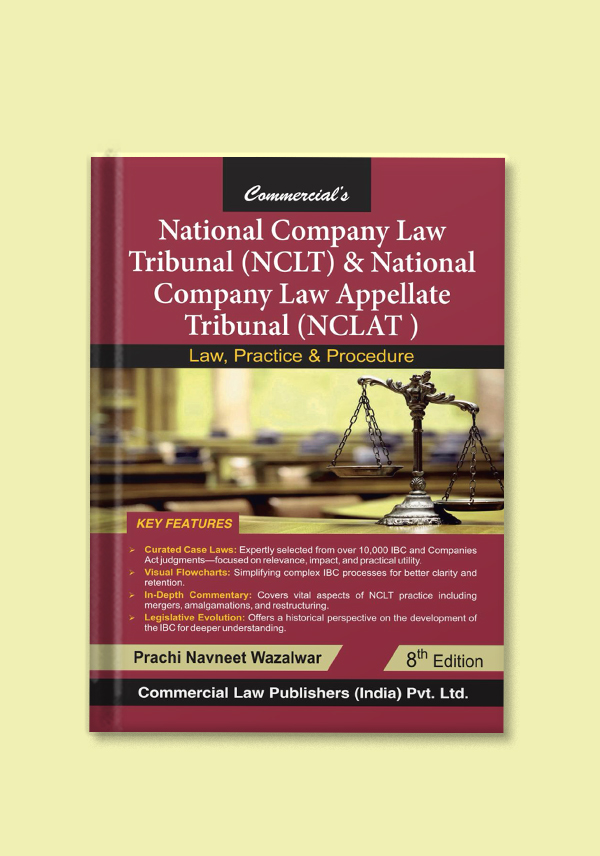
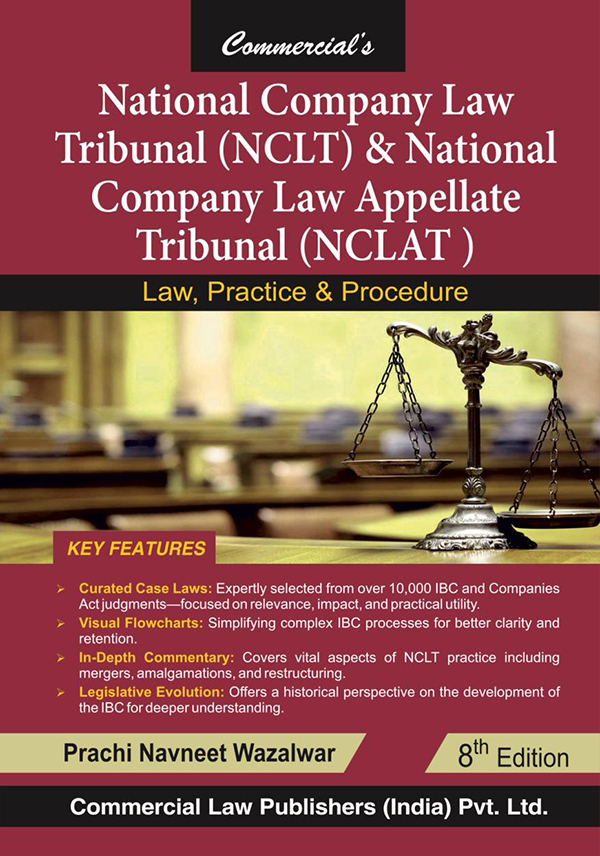
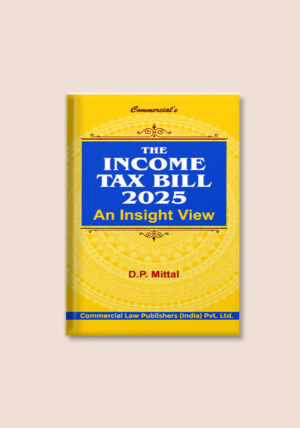
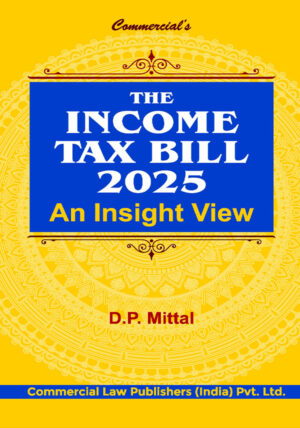
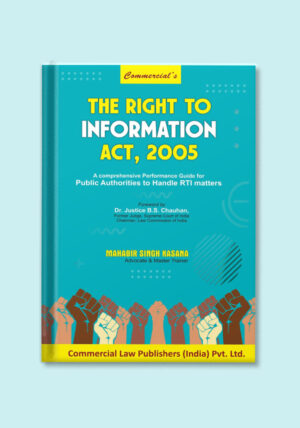
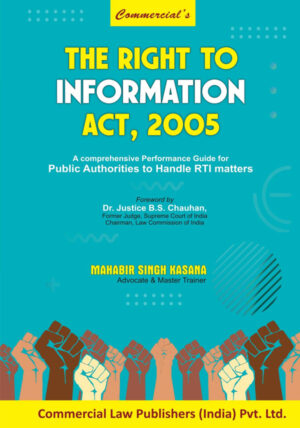
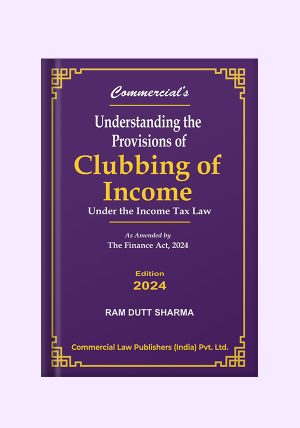
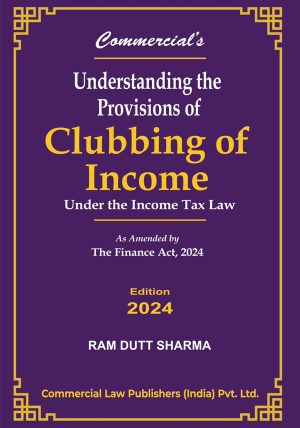
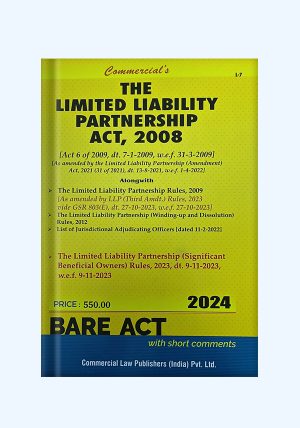
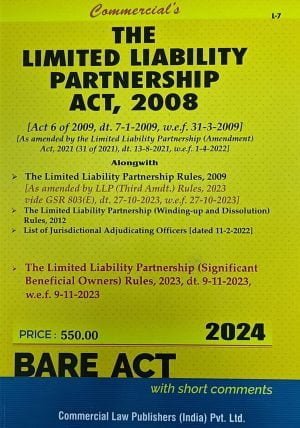




Reviews
There are no reviews yet.